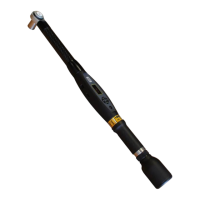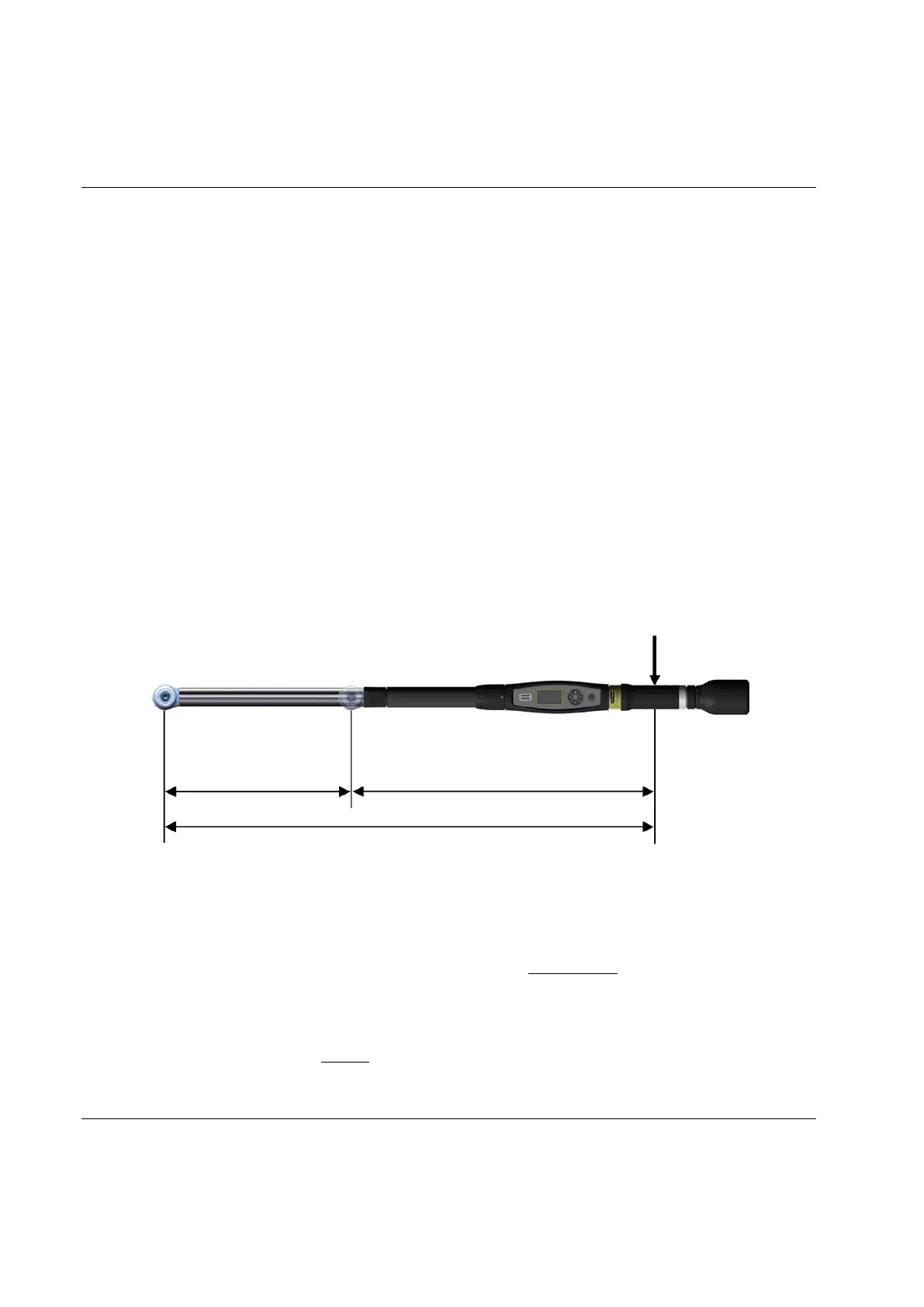Appendix A – Calculating correction coefficients for extensions STwrench User Guide
310 (326) 9836 4134 01 Edition 2.9
22 Appendix A – Calculating Torque and
Angle Correction Coefficients
When the joint design or space limitations preclude use of standard sockets or tools, it may be necessary to
use special extension spanners to fit the application.
In these cases, the wrench measure must be adequately compensated because the factory calibration is
made for the standard arm (L) and the extension arm (E) increases the measured torque. The angle
measure is also affected by the extensions, due to its specific torsion when the torque is applied.
Also when a torque multiplier is used on the STwrench, the torque provided on the joint is greater than the
torque produced by the wrench; in this case the torque correction coefficient is needed to adjust the
STwrench torque reading (see below). The angle measurement is also affected, but in this case the
STwrench cannot compensate the angle measurement.
22.1 Torque Correction Coefficient
From the relation between the displayed and applied torque
, the torque correction
coefficient is given by the following formula:
Torque correction coefficient =
D = displayed torque
L = standard arm (see the Specifications chapter for details)
E = extension arm
L + E = total arm

